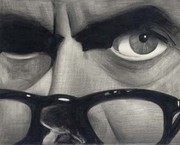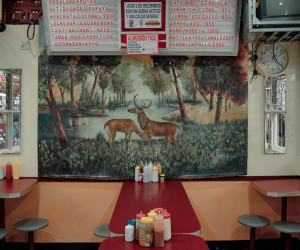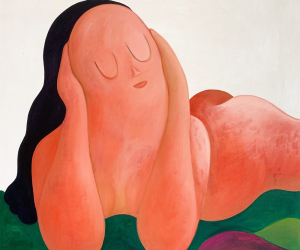
MARCEL DZAMA
Posted by Fabio 14 March 2011
Marcel Dzama has become known for his prolific drawings, which are characterized by their distinctive palette of muted browns, grays, greens, and reds. In recent years, the artist has expanded his practice to encompass three-dimensional work and film and has developed an immediately recognizable language that draws from a diverse range of references and artistic influences, including Dada and Marcel Duchamp.
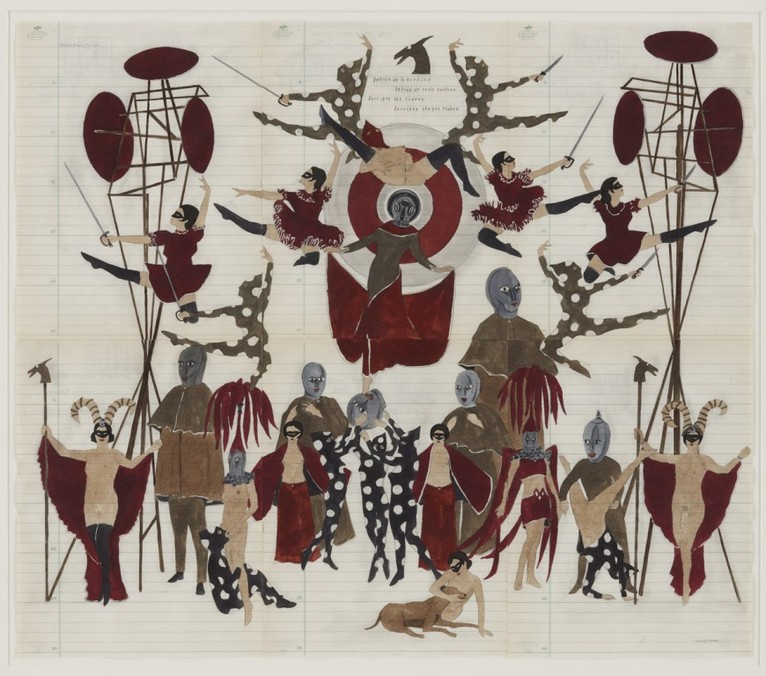

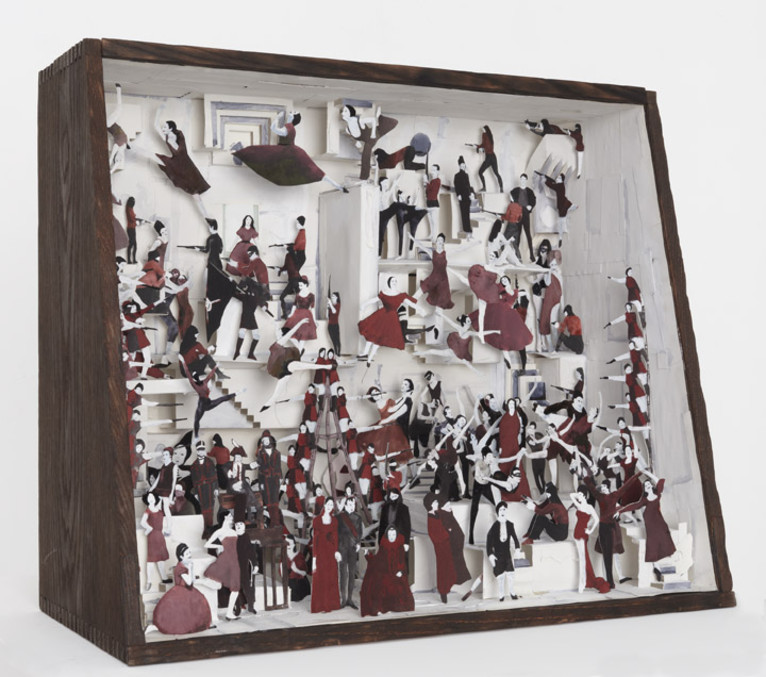
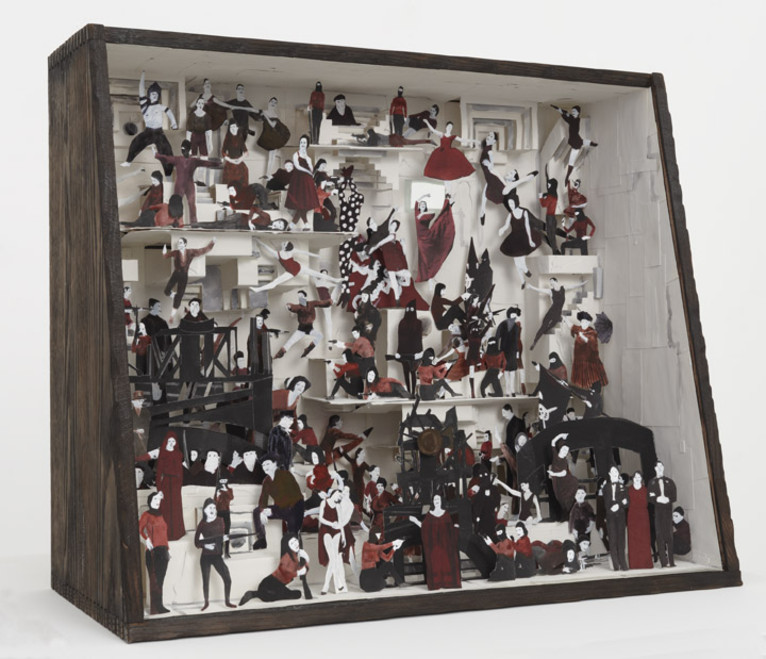 Dzama’s film features characters based on the classic game of chess. Dressed in geometrically designed costumes of papier-mâché, plaster, and fiberglass and wearing elaborate masks (including a quadruple-faced mask for the King), the figures dance across a checkered board to challenge their opponents in fatal interchanges. Chess occupied a central role for the early twentieth-century avant-garde, who drew explicit analogies between the game (with its intricate balance between improvisation and predetermination) and artistic practice. Dzama is influenced by German Bauhaus artist Oskar Schlemmer, whose Triadic Ballet from 1922 included puppet-like, costumed, and mask-wearing figures dancing across a checkered surface. French film-maker René Clair and painter Francis Picabia were amongst other artists who integrated ballet and chess in their works from the 1920s, employing the special set of rules and moves of the game as metaphors for larger questions regarding free will, destiny, and technological determinism. Both the filming and the creation of the costumes for A Game of Chess were carried out in Guadalajara, Mexico, and the influence of local crafts and religious traditions can be felt throughout this body of work. Notions of scapegoatism and resurrection blend with the timeless idea of rivalry represented by the game, and distinctions between reality and fiction ultimately become blurred as both costumed and “real-life” characters in the film are killed. The storyline in this way recalls the Surrealist predilection for dream logic over conventional narrative form—epitomized by Luis Buñuel’s films from the late 1920s and early 1930s. However, Dzama still retains a strong sense of a plot, with subtle insinuations to contemporary life discernible throughout.
Dzama’s film features characters based on the classic game of chess. Dressed in geometrically designed costumes of papier-mâché, plaster, and fiberglass and wearing elaborate masks (including a quadruple-faced mask for the King), the figures dance across a checkered board to challenge their opponents in fatal interchanges. Chess occupied a central role for the early twentieth-century avant-garde, who drew explicit analogies between the game (with its intricate balance between improvisation and predetermination) and artistic practice. Dzama is influenced by German Bauhaus artist Oskar Schlemmer, whose Triadic Ballet from 1922 included puppet-like, costumed, and mask-wearing figures dancing across a checkered surface. French film-maker René Clair and painter Francis Picabia were amongst other artists who integrated ballet and chess in their works from the 1920s, employing the special set of rules and moves of the game as metaphors for larger questions regarding free will, destiny, and technological determinism. Both the filming and the creation of the costumes for A Game of Chess were carried out in Guadalajara, Mexico, and the influence of local crafts and religious traditions can be felt throughout this body of work. Notions of scapegoatism and resurrection blend with the timeless idea of rivalry represented by the game, and distinctions between reality and fiction ultimately become blurred as both costumed and “real-life” characters in the film are killed. The storyline in this way recalls the Surrealist predilection for dream logic over conventional narrative form—epitomized by Luis Buñuel’s films from the late 1920s and early 1930s. However, Dzama still retains a strong sense of a plot, with subtle insinuations to contemporary life discernible throughout.


